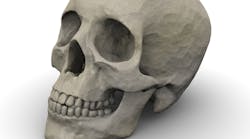March 7, 2013
In the recent bookConsider the Fork: A History of How We Cook and Eat, Bee Wilson writes about unanticipated consequences that resulted from the changes we made in cooking and eating throughout history.
Why humans don't continually replace their teeth
Ancient tooth decay DNA reveals effects of changing diets
It seems, she says, that the overbite is one of those consequences. In an interview with The Atlantic, Wilson states: “Until around 250 years ago in the West, archeological evidence suggests that most human beings had an edge-to-edge bite, similar to apes. In other words, our teeth were aligned like a guillotine.” Suddenly, she says, everything changed. We developed an overbite, and now our teeth fit together less like a guillotine, and more like “a lid on a box.”
This isn’t a result of an evolutionary process, however, as it would have taken much longer than 250 years for our bodies to display this adaption as an evolutionary trait. Instead, it’s a result of the way we’ve been taught to use cutlery from an early age. So rather than clenching the food between our teeth and ripping off pieces to chew, we have bite-size pieces from our forks and knives.
Another change Wilson wrote about was what happened when humans started making soft foods. When pots were introduced to cooking around 10,000 years ago, adults without teeth were able to continue eating, and therefore, continue living. “There are no traces of edentulous – toothless – skeletons in any population without pottery,” she told The Atlantic.
To this day, we eat softer foods when we could eat harder foods, like, as Wilson suggests, apple puree instead of a raw apple. Since it’s easier for our bodies to digest softer foods, we expel fewer calories, so we hold on to more calories. Perhaps an answer to the obesity epidemic is all in the jaw. As Wilson advises, “Maybe in the future we need to design [technologies] that make [eating] a bit slower and more challenging again – or at the very least ones that require a bit of jaw action."
Lauren Burns is the editor of Proofs magazine and the email newsletters RDH Graduate and Proofs. She is currently based out of New York City. Follow her on Twitter: @ellekeid.







